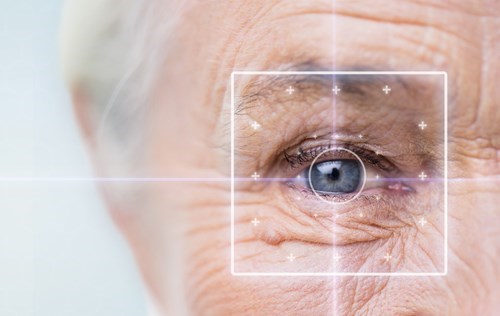What is Blended Vision?
09 March 2020

Traditionally, blended vision was another term for monovision…
Monovision is where one eye is treated for distance vision and the other eye is treated for near vision; ultimately creating a full range of visual clarity. This can be achieved with the use of laser or lens surgery.
The dominant eye will customarily be corrected for good distance vision; meaning that the non-dominant eye will be corrected for reading vision.
In short, blended vision is a treatment for the simultaneous correction of near-sightedness and far-sightedness. It earns its name because the eyes work together after surgery to ‘blend’ their focus.
This term is often confused with blended laser vision, which is also effective in treating presbyopia and astigmatism.
Presbyopia is an unavoidable age-related condition, which kicks in from the age of 45. It occurs when the muscles around the lens start to weaken; affecting the ability to focus on objects which are close-up. Presbyopia is a little like farsightedness, however it does not relate to the shape of the cornea.

Blended laser vision vs. monovision
As mentioned above, blended vision and monovision are technically the same. One eye is corrected for long-vision and the other eye is corrected for short-vision; either by means of laser surgery or lens surgery.
Here is where it gets confusing. Where monovision and blended vision were once considered equivalent, some companies now refer to presbyopia laser treatments, such as Presbymax, as blended vision too.
Presbymax and monovision are slightly different, in that the innovative laser used during Presbymax achieves a deeper depth of focus.
Around 95% of people are candidates for blended laser vision, whereas only 50% of people are candidates for traditional monovision. This is because with monovision there is often a gap in intermediate (mid-range) vision; causing transitions between focusing on close-up and far away objects less streamlined.
When it comes to blended laser vision, more ‘zones’ of visual clarity are created; giving patients a wider scope of clear vision. In other words, the ‘near eye’ with blended laser vision sees much better at distance than the ‘near eye’ fixed with traditional monovision. Similarly the ‘distance eye’ sees better up close than the ‘distance eye’ with traditional monovision.
Because of this, unlike with traditional monovision treatments, a contact lens trial is not required prior to blended laser vision. These trials are used to ensure that the patient will be able to tolerate the two varying refractive powers of each eye and thus create a coherent image.
Some people see treatments like Presbymax as an ‘upgrade’ to traditional monovision. This is mainly due to the overlap between focusing zones. As a result, there is less of a dramatic change for the brain to adjust to.
The alternative to blended vision
When it comes to monovision or blended laser vision, the eyes and brain work as a team to create one image. But, there is an alternative which has proved very popular.
We are talking about multifocal lens implants. Here, instead of correcting long sight in one eye and short sight in the other, long, short AND intermediate vision is fixed in BOTH eyes. Giving the brain a break from adjusting to two different images as created with monovision.
A multifocal lens implant also tackles presbyopia and astigmatism; giving patients complete independence from glasses and contact lenses. In fact, over the past decade, lens replacement surgery has become a very common procedure for correcting presbyopia.
One benefit lens replacement surgery has over any laser treatment is that it treats and prevents cataract. Once the infected lens has been removed, the chance of developing a cataract in later life has been eliminated.
Back to Blog
